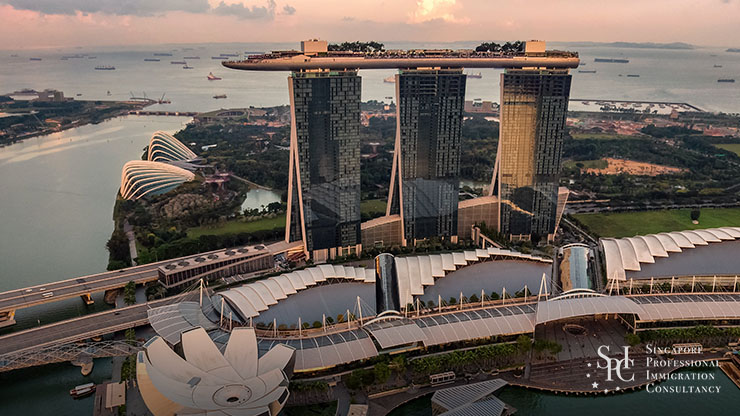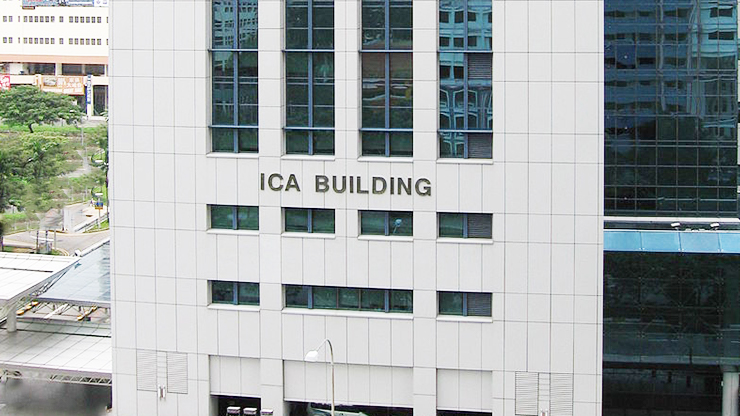Central Provident Fund (CPF)
The Central Provident Fund (CPF)/Central Provident Fund Board/CPF Board plays an incredibly important role in Singapore’s social security system. It was instated to make sure that people had enough money in savings for retirement and to cover their medical care expenses or even to purchase a home. This is achieved through a portion of the person’s monthly salary contributing to their CPF. This means that the amount of pay you take home will be less than your gross salary. These monthly contributions are deducted from your salary automatically.
The rationale seems to be that Singapore citizens would not prepare for their retirement needs or unexpected medical bills and other healthcare needs unless forced to. It also improves homeownership rates because CPF money cannot be used for rent, only for purchases. In addition, CPF offers the best retirement related financial products and enhances retirement savings.
How are Central Provident Fund (CPF) Contributions made?
Your employer will set out a monthly payout amount to be paid into your CPF savings. This amount will come out of your monthly wages. Additionally, they also need to make CPF contributions payable from their own pocket that are not related to your salary. Employers must do this for all their employees according to the employment act. The percentage for CPF contributions is determined by age and are standard for all Singapore employees (as long as they are either a Singapore citizen or Singapore permanent resident).
- For people younger than 55 years, your employer contribution rate is 17% of your monthly salary. The contribution from employees is 20%.
- Ages 55 to 60 have an employer CPF contribution of 14%, and the employees’ CPF contribution is 14%.
- Ages 60 to 65 have an employer CPF contribution of 10% and a personal CPF contribution of 8.5%.
- Ages 65 to 70 have an employer rate of 8% and a personal rate of 6%.
- Persons above 70 years have an employer rate of 7.5% and a personal rate of 5%.
There is currently a plan in place to increase the Central Provident Fund (CPF) contribution rates for older workers over the next ten years to meet the 37% total rate of persons under 55 years. For self-employed individuals, all Central Provident Fund contributions are voluntary contributions, with your Medisave account being the sole exception, as the employment act specified that MediSave contributions are compulsory to cover any healthcare needs.
There is a limit to how much you can contribute to your CPF in a month. This Wage Ceiling comprises the Additional Wages Ceiling (which can include your annual bonus and is calculated against your ordinary wages) and the Ordinary Wages Ceiling (capped at SGD 6,000).
Types of Central Provident Fund (CPF) Accounts
There are four kinds of CPF accounts, and each serves a different purpose; these include the following CPF accounts:
- The Ordinary Account can be used for investments, tertiary education, and housing. What remains can be used for retirement.
- The Special Account is mainly for retirement and can be used for investment up until a certain point.
- The Medisave Account is for medical bills and expenses and to pay for hospitalisation.
- From the age of 55, you also receive a Retirement Account, which is an amalgamation of your Ordinary Account and Special account.
CPF members can use their CPF payouts for many different things as stipulated by the Singapore government statutory board. Examples are a life annuity, a home, education for their children or other family members, etc. CPF contributions are made to these accounts despite annual leave, and your annual bonus amount is included in calculations.
Individual Account CPF Contribution Rates
While the monthly CPF contribution rates remain the same as indicated above, the amount that is contributed is split between the three accounts. Remember that there is also a minimum sum that must be maintained in terms of the combined CPF balances before retirement withdrawals can be made. Also, once funds are traded between CPF accounts, you cannot exchange-traded funds back to their original account.
- Until the age of 35, 23% of your contribution goes into your Ordinary account, 6% goes to your Special account, and 8% goes to Medisave.
- For ages 35 to 45, the contribution rate is 21% in the Ordinary account, 7% in the Special Account, and 9% in Medisave.
- Ages 45 to 50 years see 19% in the Ordinary account, 8% in the Special Account, and 10% in Medisave.
- Ages 50 to 55 years see 15% in the Ordinary account, 11.5% in the Special Account, and 10.5% in Medisave.
- Ages 55 to 60 years see 12% in the Ordinary account, 5.5% in the Special Account, and 10.5% in Medisave.
- Ages 60 to 65 years see 3.5% in the Ordinary account, 4.5% in the Special Account, and 10.5% in Medisave.
- Ages 65 to 70 years see 1% in the Ordinary account, 2.5% in the Special Account, and 10.5% in Medisave.
- Finally, ages 70 and above see 1% in the Ordinary account, 1% in the Special Account, and 10.5% in Medisave.
These percentages encompass the total amounts contributed by both employers and employees under the employment act. Annual leave will not affect contributions, and CPF members must remember that they aim to meet the minimum sum of combined CPF balances for the Basic Retirement Sum by their payout eligibility age. Ideally, they should be aiming for the sprung higher than the Basic Retirement Sum by their payout eligibility age if possible, as that will ensure a more comfortable retirement. However, reaching the Basic Retirement Sum does ensure retirement will be possible, and a livable rate is available to them monthly.
CPF Investment Scheme
The CPF Investment scheme allows CPF members to further enhance their retirement savings by investing funds from their ordinary and special accounts into a specialised interest bearing investment opportunities. In addition to the CPF Investment Scheme, the Singapore government also allows employees to invest in the Special Discounted Shares Scheme.
When can you access your CPF accounts?
The Singapore government provides no set-in-stone rule for accessing the money in your Central Provident Fund. However, there are some specific things that Singaporeans usually spend their retirement account money on before they retire.
This might be to purchase a home, either an HDB or private property. A part of the property can be paid for out of your OA. Alternatively, you can pay your monthly home loan with your OA funds. The goal is to increase home ownership rates in Singapore.
You can also access the OA funds to pay for education. Through the CPF education scheme, you can pay for your own tuition or tuition of a family member. You can also use money from your CPF account to invest in Unit Trusts, shares, investment-linked insurance, etc.
With your Medisave account, you can purchase an Integrated Shield Plan. They are for private health insurance that will largely boost your MediShield life account.
How does the CPF Retirement Sum affect the average contributor?
Previously, it used to be called the CPF Minimum Sum, which was not received well, so the government in Singapore changed the term was changed to the CPF Retirement Sum. There are two ways that the Retirement account can pay out. The original way that the Singapore CPF Retirement Sums paid out involved a minimum amount required in your CPF account upon retirement. This was done to ensure sufficient monthly payouts to maintain a certain standard of living. Your monthly payout amount will be dependent on your Retirement account.
The much newer CPF Lifelong Income For The Elderly scheme gives you monthly payouts for the remainder of your life. Your CPF savings will thus last the rest of your life. The following requirements need to be met for an individual to be automatically enrolled in CPF LIFE. *Individuals who do not meet the requirements can apply to join it.
- Must be a Singapore PR or Singapore Citizen.
- Born in or after 1958.
- CPF Retirement account balances must be at least SGD 60,000 six months before the payout age is reached.
The government stipulates that individuals can decide when between the ages of 65 and 70 they want their monthly payouts to begin.
Are the CPF LIFE payouts made in a Lump Sum or Monthly?
When your OA and SA merge at the age of 55, you can leave your Retirement Sum to ensure your retirement income and can withdraw a lump sum from those savings. While inflation and the cost of living continue to rise, it becomes necessary to raise the Retirement amount in your Central Provident Fund as well.
There are three levels for each CPF that will depend on the overall accumulated funds. As of 2022, the Basic Retirement sum is SGD 96,000, the Full Retirement Sum is SGD 192,000, and the Enhanced Retirement Sum is SGD 288,000. These amounts encompass the entire contribution from employers and employees.
Your monthly payouts from these savings will depend on the amount you have managed to gather by the age of 65. That being said, what will the lump sum be?
At minimum, you should ensure that the Full Retirement sum remains in your CPF. If your overall sum is too low, then a property in your name can count towards the total amount. At the absolute minimum, you need to ensure that the Basic retirement sum remains in your CPF savings. Nevertheless, you will be able to draw at least SGD 5,000 when you turn 55.
Bear in mind that monthly interest rates on your CPF savings are higher than what can be expected from a bank savings account. On average, your Ordinary account makes 2.5% interest, the Special Account makes 4%, your Medisave account makes 4%, and the Retirement account makes 4%. You are able to transfer money from the OA to the SA in order to optimise your interest rate; however, it cannot be transferred back.
CPF Nominations
At this time, your Central Provident Fund (CPF) savings cannot be willed to anyone or anything. The only way that it can be distributed after your death is through the CPF Nominations Scheme, which allows you to nominate a beneficiary and dictate how much of the remaining fund is distributed to this beneficiary.
In order to accomplish this, you need to complete the CPF nomination form and attach supporting documents and submit the form through the mail or through an appointment. If you make no nomination, then your CPF savings are distributed to your next-of-kin by the Public Trustee’s Office according to intestacy laws. In this case, the office does charge an administration fee.

 APPLY FOR SINGAPORE PR 2023/2024
APPLY FOR SINGAPORE PR 2023/2024 

